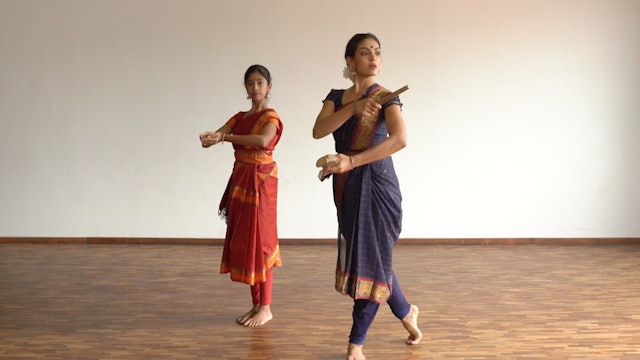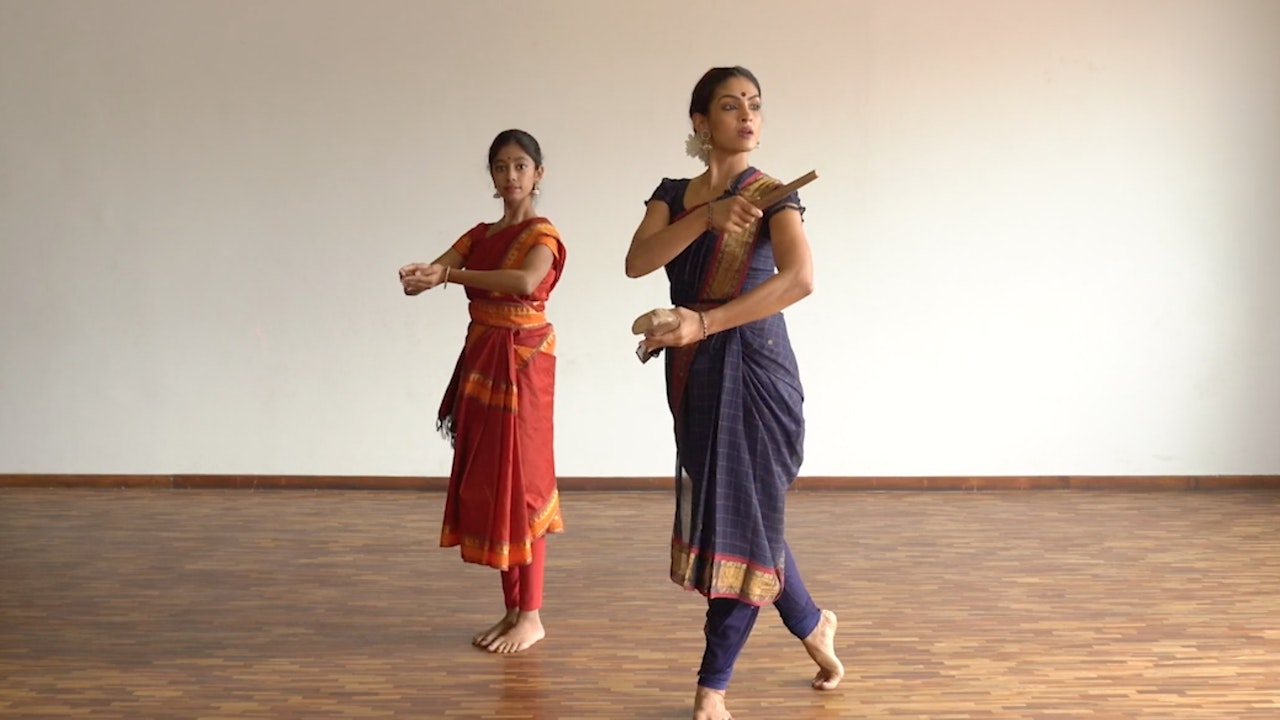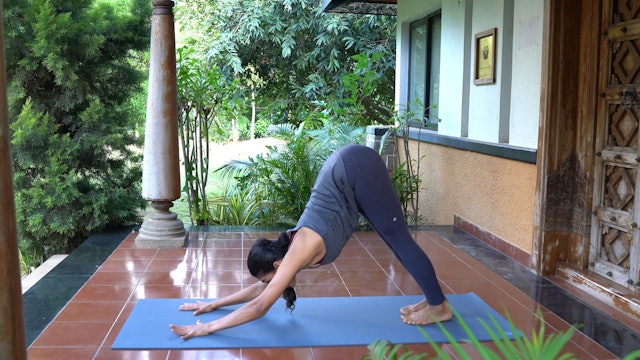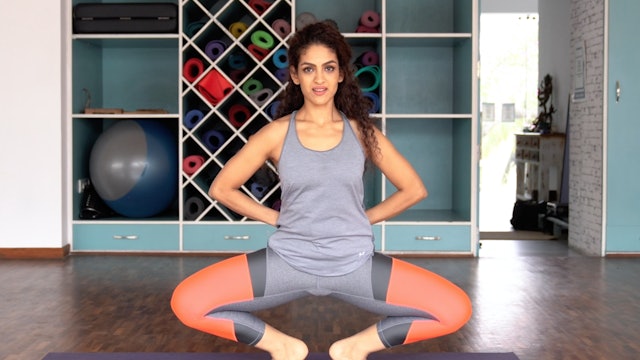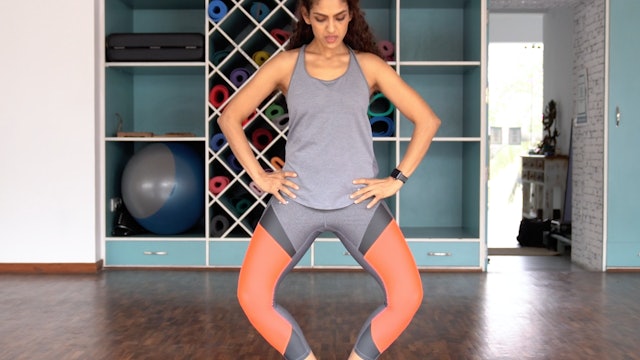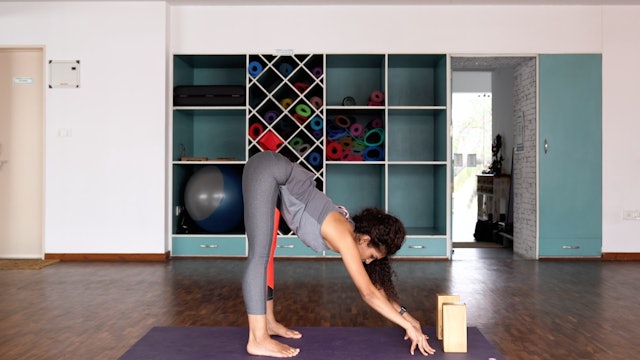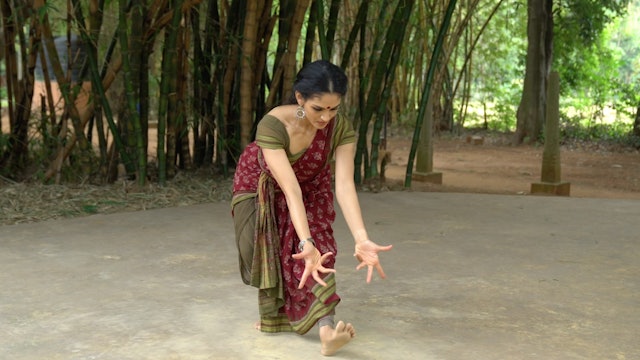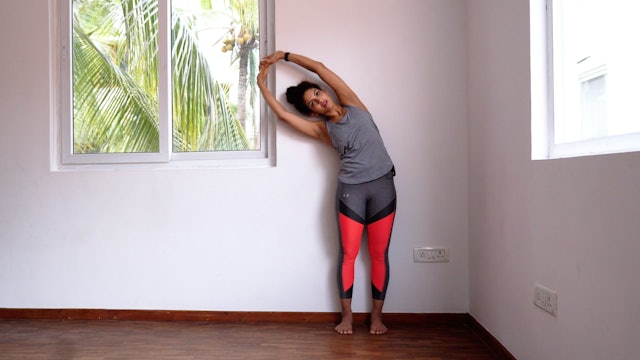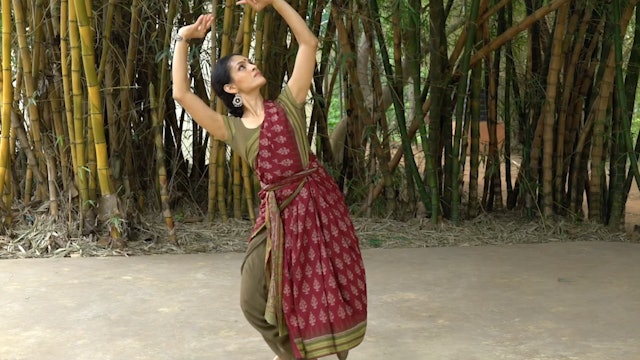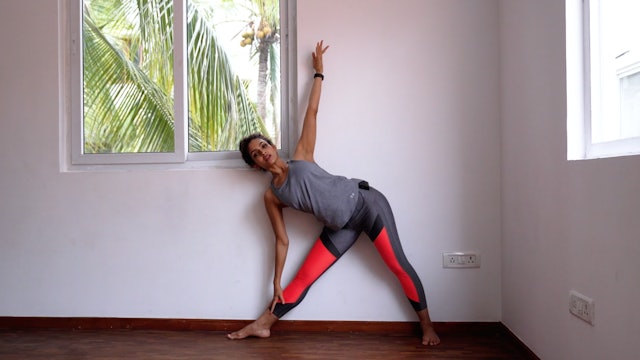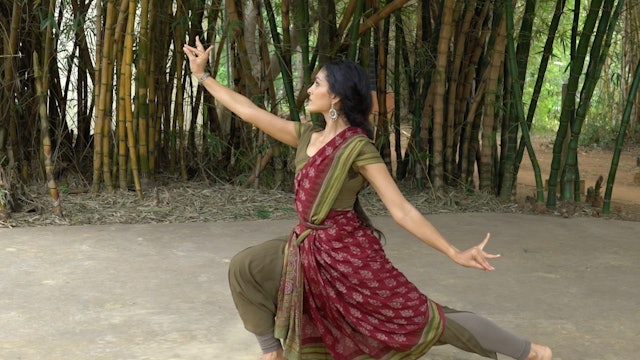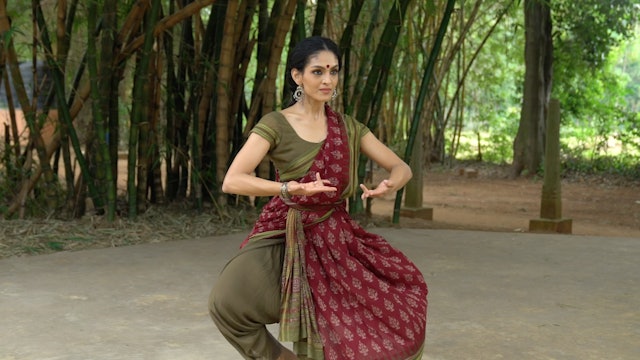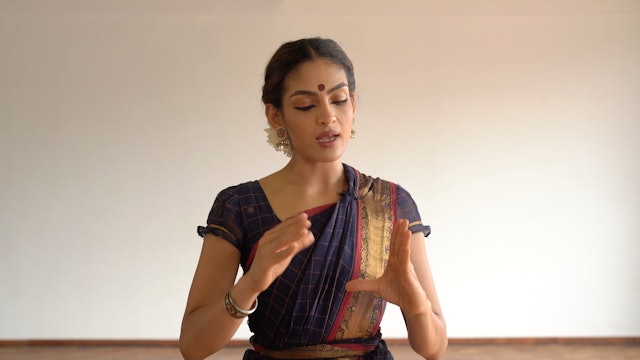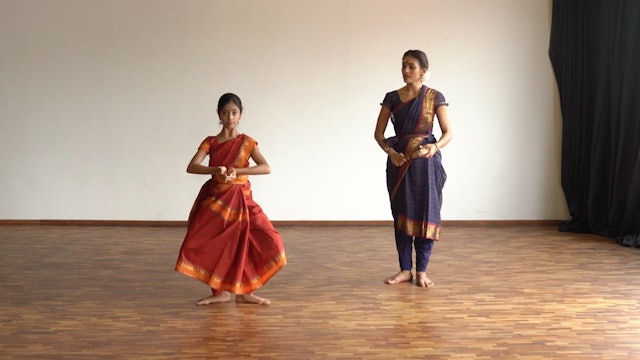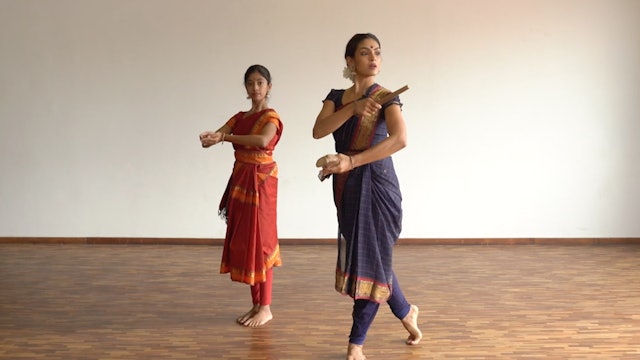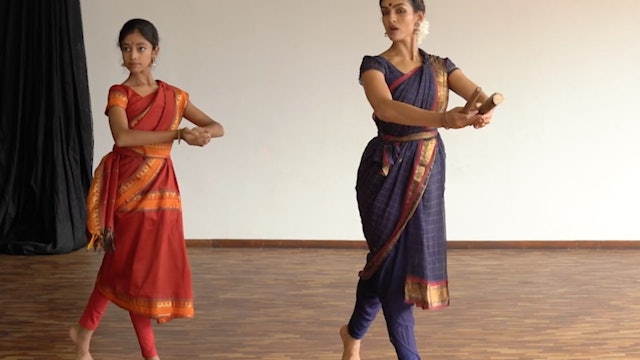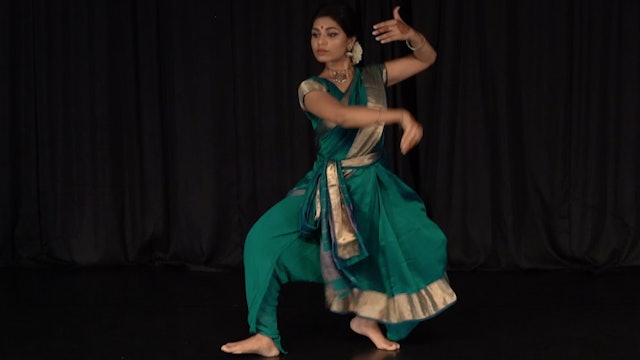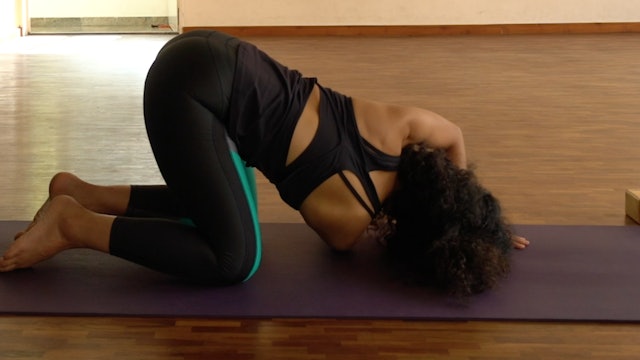Playlist 16 : Repertoire Pushpanjali
This playlist revisits the bends and reinforces them alongside the adavus and also introduces the Pushpanjali.
Please keep in mind that the repertoire playlists do not build much strength or flexibility. You must add those aspects on your own or practice another playlist alongside these playlists.
-
Warm up : Isolations
The warm up changes in length and content as your body changes. What a conditioned body needs to warm up is very different than a body that is beginning this journey. This warm up is safe and helps a dancer at every level to find openness in the body. It can be done in combination with the hip op...
-
Aramandi Tips 4
This series will deal with a number of exercises that will work with developing a strong and stable Araimandi. It will also help resolve issues with knee and ankle pain. It must be practised in combination with the Hip openers and Leg strength for maximum benefit.
-
Aramandi Tips 3
This series will deal with a number of exercises that will work with developing a strong and stable Araimandi. It will also help resolve issues with knee and ankle pain. It must be practised in combination with the Hip openers and Leg strength for maximum benefit.
-
Bends 1 : Front
The Raadha Kalpa Method has analysed and broken down the various torso movements into a system of bends that are different from one another. The musculature that is engaged in each bend is different and the stability necessary for execution is also different.
This introduces the front bend.
-
Naatadavu 3
The third Naatadavu stretches the leg out to the front. If you are unable to keep your back straight when doing this, please refer to the flexibility section and practice the tips for forward bends and try again.
-
Bends 2: Side
The Raadha Kalpa Method has analysed and broken down the various torso movements into a system of bends that are different from one another. The musculature that is engaged in each bend is different and the stability necessary for execution is also different.
This introduces the first type of s...
-
Pakkadavu 3
Pointers for Pakkadavu 3:
Keep your shoulders down when lifting your arms.
Make sure your arms do not go too far back.
Follow your arm and keep your gaze toward the wrist of the arm you are bending away from.
Make sure you keep your thighs pushing back while retaining Swastikam in your feet.
... -
Bends 3 : elongated side
The Raadha Kalpa Method has analysed and broken down the various torso movements into a system of bends that are different from one another. The musculature that is engaged in each bend is different and the stability necessary for execution is also different.
This introduces the second side bend.
-
Naatadavu 4
The 4th Naatadavu expects a little more stability in the body. Please practice any of the Strength sections that work on lunges and squats, to achieve a deep lunge in this Adavu.
-
Kudiita Thattaduvu
Pointers for Kuditta Thattadavu:
Try to go down instead of hopping up each time you snatch onto your heels.
Keep dropping your tailbone and pushing your thighs back.
When you bend to the side, elongate your lower side, so the length of your top side and bottom side remain the same.
Do not push... -
Pushpanjali: Introduction
The introduction to the Pushpanjali
Raga : Aarabhi
Adi Tala
Composer : Dr BalamuralikrishnaThe Pushpanjali will be taught in parts with detailing on rhythm and alignment.
A Pushpanjali is traditionally an invocatory piece that is placed at the beginning of a Bharatanatyam performance. Push...
-
Pushpanjali: Part 1
The introduction to the Pushpanjali
Raga : Aarabhi
Adi Tala
Composer : Dr BalamuralikrishnaThe Pushpanjali will be taught in parts with detailing on rhythm and alignment.
A Pushpanjali is traditionally an invocatory piece that is placed at the beginning of a Bharatanatyam performance. Push...
-
Pushpanjali: Part 2
The introduction to the Pushpanjali
Raga : Aarabhi
Adi Tala
Composer : Dr BalamuralikrishnaThe Pushpanjali will be taught in parts with detailing on rhythm and alignment.
A Pushpanjali is traditionally an invocatory piece that is placed at the beginning of a Bharatanatyam performance. Push...
-
Pushpanjali: Part 3
The introduction to the Pushpanjali
Raga : Aarabhi
Adi Tala
Composer : Dr BalamuralikrishnaThe Pushpanjali will be taught in parts with detailing on rhythm and alignment.
A Pushpanjali is traditionally an invocatory piece that is placed at the beginning of a Bharatanatyam performance. Push...
-
Pushpanjali
Pushpanjali
Raaga: Aarabhi
Aditala
Composer: Dr Balamuralikrishna
Choreography: Rukmini VijayakumarThe Pushpanjali is choreographed with many rhythmic layers. You will have an appending document that you can download to understand the Rhythm clearly.
There is an added verse from the Ganesha P...
-
General mobility
This is a great session to do on a day when you feel tight or sore. It opens up your body without expecting too much of it. You can also do it before you start a warm-up or after a strength or dance session. It is a session that is safe to practice early in the morning.
